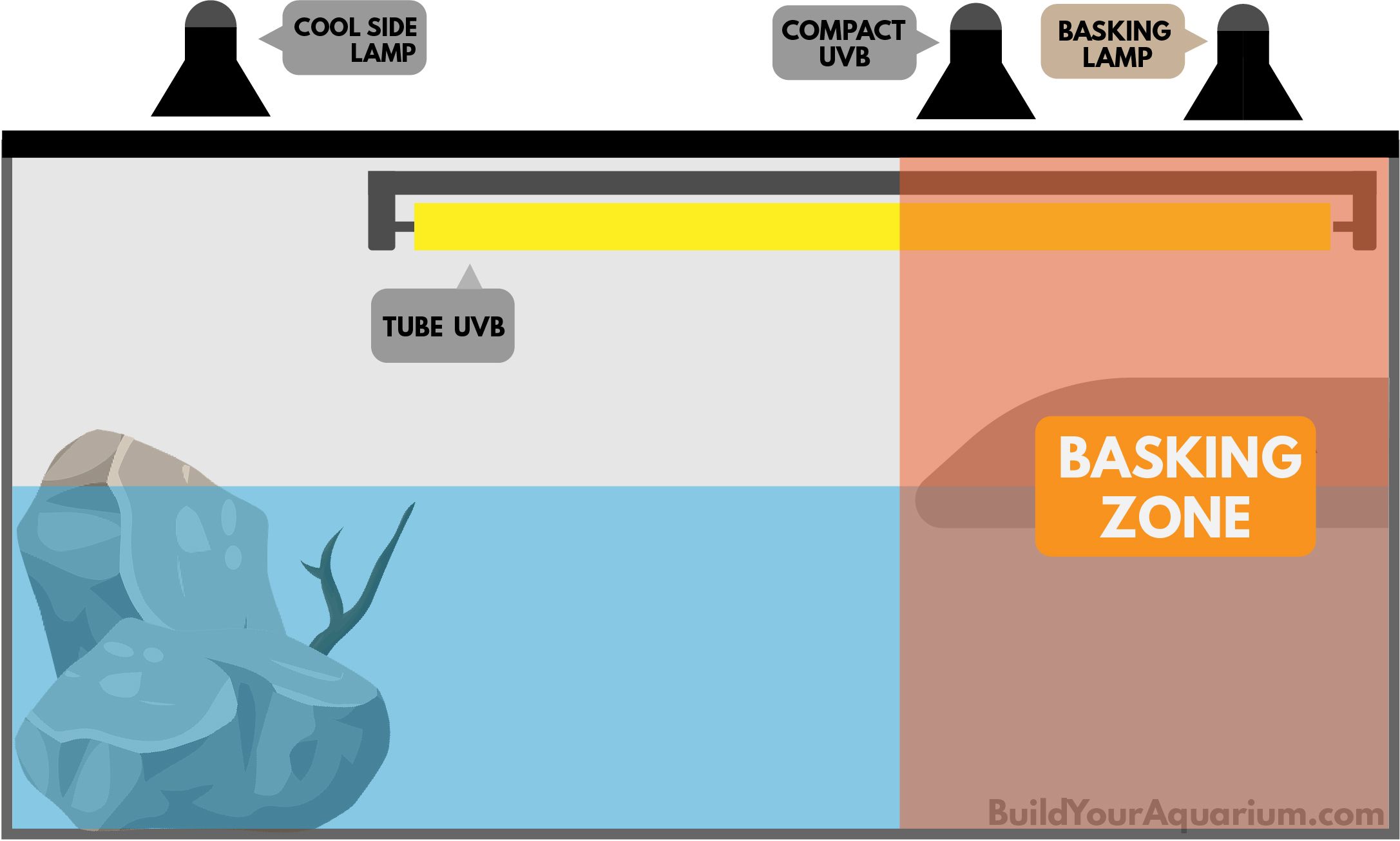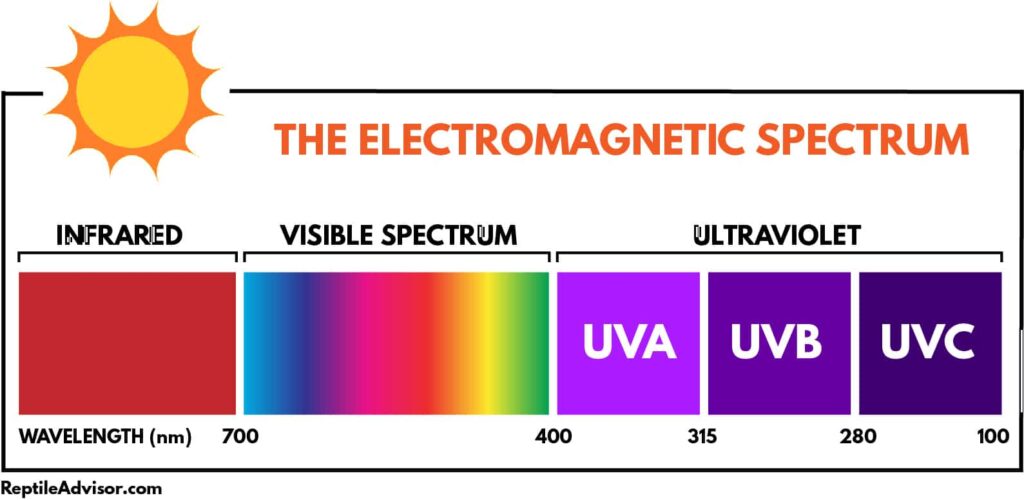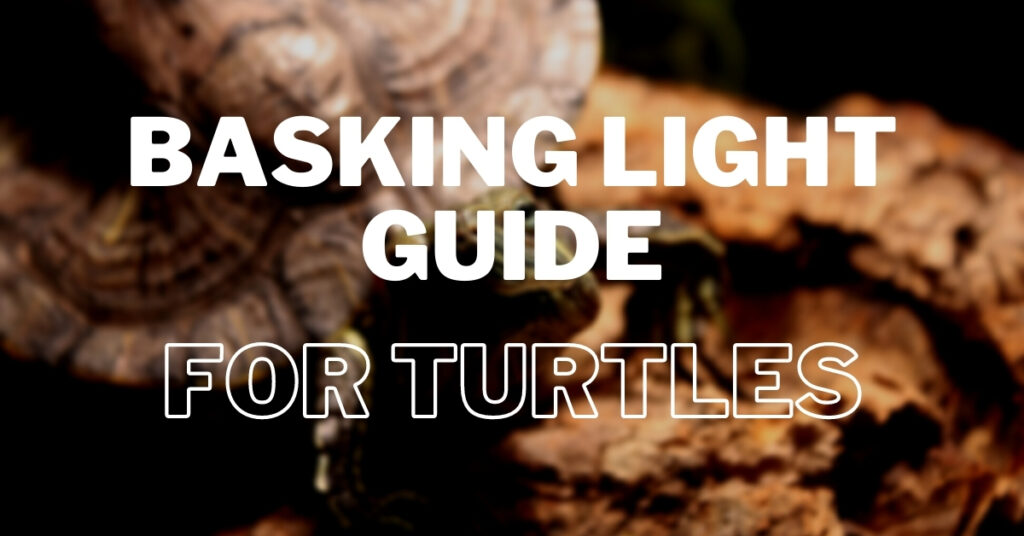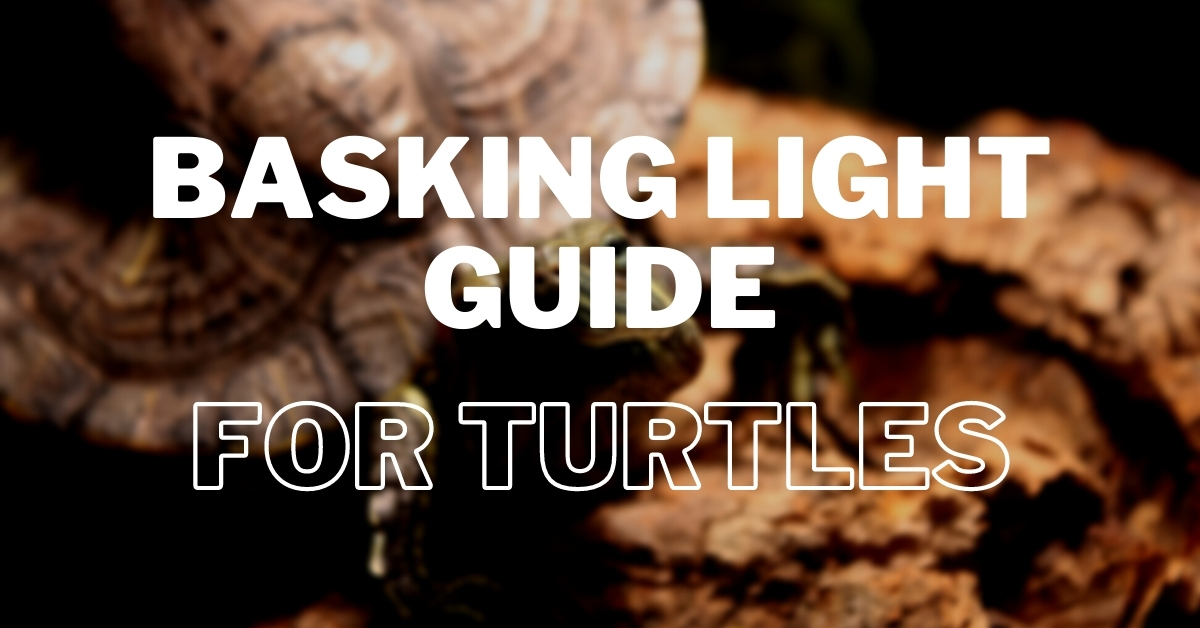Have you ever wondered what kind of lighting is best for your pet turtle? Lighting is an important aspect of turtle care, as it plays a crucial role in their overall health and well-being. In this article, we will focus specifically on UVA lighting for turtles, and explore why it is essential for their growth and development. So, if you want to ensure that your turtle is living its best life, keep reading!
UVA lighting, also known as ultraviolet A radiation, is a crucial element in providing a suitable habitat for your pet turtle. These reptiles rely on UVA rays to regulate their body temperature, metabolism, and overall behavior. Without access to proper UVA lighting, turtles may experience health issues such as poor appetite, low energy levels, and even complete loss of appetite. In order to prevent these problems, it is important to ensure that your turtle’s habitat is equipped with suitable UVA lighting. But don’t worry, we’ll dive deeper into the specifics of UVA lighting and how to provide it for your turtle in the upcoming sections of this guide. Stay tuned to learn more about the importance of UVA lighting and how to create the perfect lighting setup for your pet turtle!

What is UVA light?
Definition of UVA light
UVA light, also known as ultraviolet A light, is a type of light that falls within the ultraviolet spectrum. It has a wavelength range of 315 to 400 nanometers and is invisible to the human eye. UVA light is present in both natural sunlight and various artificial light sources.
Characteristics of UVA light
UVA light differs from other types of light because of its longer wavelength and lower energy. It is less intense than UVB light but can penetrate deeper into the skin and other surfaces. UVA light is responsible for tanning and is often associated with aging effects on the skin.
Sources of UVA light
UVA light can be obtained from various sources, including the sun, which is the primary natural source. Artificial sources of UVA light include UVA bulbs and lamps specifically designed to emit UVA rays. These artificial sources are commonly used in turtle enclosures to provide UVA exposure for captive turtles.
Importance of UVA light for turtles
Natural habitat and UVA exposure
In their natural habitat, turtles are exposed to UVA light from the sun. This exposure is vital for their overall health and well-being. UVA light helps regulate their metabolism, hormone production, and vitamin synthesis. It also plays a significant role in their behavior and general physiological functions.
Role of UVA light in turtle health
UVA light is crucial for maintaining a healthy shell and skin in turtles. It stimulates the production of vitamin D3, which facilitates proper calcium absorption and bone development. Without adequate UVA exposure, turtles can develop serious health issues such as metabolic bone disease, shell deformities, and weakened immune systems.
Behavioral benefits of UVA light
In addition to its physiological benefits, UVA light also influences turtle behavior. It helps in the regulation of their activity levels, basking behavior, and reproduction cycles. UVA exposure can help reduce stress, promote natural behaviors, and encourage normal feeding habits in captive turtles.

Choosing the right UVA light for turtles
UVA light spectrum requirements
When selecting UVA lighting for turtles, it is essential to choose bulbs that emit light within the UVA spectrum range. The UVA output should be balanced and consistent to provide the necessary benefits to turtles without causing harm. It is recommended to consult a veterinarian or reptile specialist to ensure you choose the right UVA bulbs for your turtles.
Different types of UVA bulbs
There are various types of UVA bulbs available in the market, each with its own specifications and features. Some common types include mercury vapor bulbs, fluorescent UVA bulbs, and halogen bulbs. Each bulb type has its pros and cons, and it is crucial to consider factors such as energy efficiency, heat output, and longevity when selecting the appropriate UVA bulbs for your turtle enclosure.
Factors to consider when selecting UVA light
When choosing UVA lighting for turtles, several factors need to be considered. These include the size of the enclosure, the species of turtle, the desired UVA intensity, and the overall lighting setup. It is important to strike a balance between providing sufficient UVA exposure and avoiding potential negative effects such as overheating or excessive brightness.
Setting up UVA lighting in the turtle enclosure
Proper positioning of UVA light
To ensure optimal UVA exposure, it is crucial to position the UVA light within the turtle enclosure correctly. The light fixture should be placed above the basking area so that turtles can readily access the light and regulate their exposure. It is important to provide a gradient of UVA intensity within the enclosure, allowing the turtles to choose the level of exposure that suits them best.
Recommended UVA light fixtures
There are various UVA light fixtures available, including clamp lamps, dome fixtures, and UV-specific lighting kits. These fixtures offer different options for positioning and adjusting the UVA light source. It is recommended to choose fixtures that provide proper heat dissipation and are compatible with the type of UVA bulbs being used.
Duration and timing of UVA exposure
The duration and timing of UVA exposure for turtles will depend on various factors, including the species, age, and health condition of the turtles, as well as their natural behavior and basking habits. Generally, turtles require a minimum of 10-12 hours of UVA exposure per day, with consistent patterns to mimic natural sunlight. It is important to research the specific requirements of your turtle species and consult a veterinarian for guidance.

Monitoring UVA exposure
Using UVA meters
UVA meters, also known as radiometers, are useful tools for monitoring the UVA levels in the turtle enclosure. These devices measure the intensity of UVA light and ensure that the desired levels are being provided to the turtles. UVA meters can help fine-tune the UVA lighting setup and ensure the accuracy of UVA exposure.
Measuring UVA levels
Ideal UVA levels for turtles can vary depending on the species and individual requirements. However, it is generally recommended to maintain UVA levels between 2.5% and 10% of the overall light output. Regular measurements using a UVA meter can help ensure the UVA levels are within the desired range and allow for adjustments if necessary.
Maintaining optimal UVA exposure
Monitoring UVA exposure is an ongoing process that requires regular observation and adjustment. Turtles may exhibit changes in behavior or health if the UVA levels are inadequate or excessive. Maintaining optimal UVA exposure involves regularly assessing the turtles’ behavior, appearance, and overall well-being, as well as making necessary adjustments to the lighting setup if needed.
Common UVA light-related issues
UVA light burn
UVA light burn can occur in turtles if they are exposed to excessive UVA levels or if the light source is too close to the basking area. Symptoms of UVA light burn may include red or swollen skin, blisters, and discomfort. If UVA light burn is suspected, it is essential to consult a veterinarian for proper diagnosis and treatment.
UVA light deficiency
Insufficient UVA exposure can have detrimental effects on turtles’ health and well-being. It can lead to metabolic bone disease, shell deformities, weakened immune systems, and behavioral issues. It is crucial to ensure that turtles receive adequate UVA exposure to meet their physiological and behavioral needs.
Preventing UVA-related problems
To prevent UVA-related problems, it is important to provide the correct UVA spectrum and intensity, monitor UVA exposure regularly, and maintain proper distance between the light source and the turtles. Additionally, ensuring a proper diet rich in calcium and other essential nutrients can further support turtle health and minimize the risk of UVA-related issues.

Supplementation and diet
Role of diet in UVA requirements
While UVA light is crucial for turtles, it is important to remember that a balanced diet is equally essential. Turtles require a varied diet consisting of high-quality pellets, fresh vegetables, and occasional protein sources. Proper nutrition helps support overall health, shell and bone development, and the absorption of UVA-induced vitamin D3.
Supplementing UVA through food
Certain foods can provide natural sources of UVA, including leafy greens, fruits, and vegetables such as collard greens, kale, and papaya. These food items contain carotenoids, which can enhance the UVA content in the turtles’ diet. However, it is important to note that dietary UVA alone may not be sufficient to meet all the UVA requirements of turtles, and UV lighting remains necessary.
Balancing UVA and other nutrients
Balancing UVA exposure with other essential nutrients is crucial for turtles’ overall health. UVA exposure can increase the demand for calcium, which is vital for shell and bone health. It is important to ensure that the turtles’ diet is well-balanced and supplemented with calcium and other essential vitamins and minerals to support proper growth and development.
UVA light and seasonal changes
Adjusting UVA exposure during seasons
In their natural habitat, turtles experience seasonal changes in sunlight, including variations in UVA intensity. It is important to mimic these seasonal changes in UVA exposure within the turtle enclosure. During the summer months, when UVA levels are typically higher, it may be necessary to adjust the lighting setup to provide additional UVA exposure. Conversely, during the winter months, when UVA levels decrease, adjustments can be made to decrease UVA exposure.
Simulating natural UVA changes
Simulating natural UVA changes within the turtle enclosure can be achieved by using programmable timers or dimmers. These devices allow for adjustments in UVA intensity throughout the day, mimicking the natural rise and fall of UVA exposure. By replicating these natural UVA changes, turtles can maintain their natural behavior, metabolism, and overall well-being.
Adapting UVA light for hibernation
For turtles that undergo hibernation or brumation during the winter, UVA exposure can be reduced or temporarily suspended. This adjustment in UVA lighting helps replicate their natural hibernation period and allows them to conserve energy. It is important to gradually decrease UVA exposure and consult a veterinarian to ensure a safe and healthy hibernation process for the turtles.

Common misconceptions about UVA light
UVA light as a heat source
One common misconception is that UVA light serves as a primary heat source for turtles. While UVA light can provide some heat, it is not sufficient to meet the temperature requirements of turtles. Separate heat sources, such as basking bulbs or ceramic heaters, should be used to create the appropriate temperature gradient within the enclosure.
UVA light and UVB light differences
Another common misconception is the confusion between UVA and UVB light. While both fall within the ultraviolet spectrum, UVA light has longer wavelengths and is less intense than UVB light. UVB light is responsible for synthesizing vitamin D3 in reptiles, while UVA light plays a different role in their overall health and behavior.
Overexposure to UVA light
Overexposure to UVA light can have negative effects on turtles’ health and well-being. It is important to provide the appropriate UVA intensity and duration, ensuring that it mimics natural sunlight without exceeding safe limits. Regular monitoring of UVA levels and observing the turtles’ behavior can help prevent overexposure and mitigate potential health risks.
Safety guidelines for UVA lighting
Choosing safe UVA bulbs
When selecting UVA bulbs for turtle enclosures, it is important to choose bulbs that are specifically designed for reptiles and have undergone safety testing. Cheap or generic bulbs may emit excessive heat or inadequate UVA spectrum, posing a risk to the turtles’ health. It is recommended to purchase UVA bulbs from reputable pet supply stores or consult with a veterinarian to ensure the safety and effectiveness of the bulbs.
Avoiding fire hazards
UVA bulbs can generate heat, and incorrect installation or improper use can create fire hazards. It is essential to follow manufacturer guidelines for bulb installation, use appropriate fixtures, and keep flammable materials away from the UVA light source. Regular inspection of the bulbs and fixtures can help identify any potential fire hazards and prevent accidents.
Protecting turtles from direct UVA exposure
Direct UVA exposure can be harmful to turtles, especially at close range. It is important to provide shaded areas within the enclosure where turtles can retreat from direct UVA light if desired. Providing hiding spots and natural barriers can help turtles regulate their exposure and prevent eye damage or skin burns.
UVA light maintenance and replacement
Regular inspection of UVA bulbs
Regular inspection of UVA bulbs is essential to ensure their effectiveness and safety. Over time, UVA bulbs can lose their intensity or become damaged, compromising their ability to provide the necessary UVA exposure. It is recommended to inspect the bulbs regularly for signs of wear, discoloration, or flickering, and replace them as needed.
Replacing outdated or damaged UVA bulbs
Outdated or damaged UVA bulbs may not provide the appropriate UVA spectrum or intensity required by turtles. It is crucial to replace these bulbs promptly to maintain the turtles’ health and well-being. Following manufacturer recommendations for bulb replacement intervals can help ensure the effectiveness of UVA lighting in the turtle enclosure.
Cleaning UVA light fixtures
Regular cleaning of UVA light fixtures is necessary to remove dust or debris that may accumulate over time. Build-up on the fixtures can reduce the output of UVA light and hinder its effectiveness. It is recommended to follow manufacturer guidelines for cleaning the fixtures and use non-toxic cleaning solutions to ensure the safety of the turtles.
Consulting a veterinarian
Seeking professional advice
When it comes to UVA lighting and turtle care, it is always beneficial to seek professional advice. Veterinarians specializing in reptiles or experienced reptile experts can provide guidance on UVA requirements, lighting setup, and overall turtle care. They can also help diagnose and treat any health issues related to UVA exposure.
Veterinary resources for UVA lighting
Veterinary resources, such as reptile-focused clinics or online forums, can provide valuable information on UVA lighting and turtle care. Many veterinarians publish articles or provide educational resources that can help turtle owners better understand the importance of UVA light and how to provide the best lighting setup for their turtles.
Monitoring turtle health with UVA exposure
Regular monitoring of turtle health is essential to ensure that UVA exposure is providing the desired benefits. Changes in behavior, appetite, shell condition, or overall appearance may indicate inadequate or excessive UVA exposure. By closely observing the turtles’ health and consulting with a veterinarian, adjustments to the UVA lighting setup can be made to maintain optimal turtle well-being.
Common FAQs about UVA lighting for turtles
How much UVA light do turtles need?
The amount of UVA light turtles need varies depending on the species and individual requirements. As a general guideline, turtles should receive a minimum of 10-12 hours of UVA exposure per day. However, it is important to research the specific requirements of the turtle species you own and consult with a veterinarian for personalized recommendations.
Can any light bulb emit UVA?
Not all light bulbs emit UVA. Regular incandescent bulbs or LED bulbs, for example, do not emit UVA rays. Specialized UVA bulbs or lamps specifically designed for reptiles are required to provide the necessary UVA spectrum for turtles. It is important to use bulbs that are designed for reptiles and have been tested for safety and effectiveness.
What should I do if my turtle avoids UVA light?
If your turtle actively avoids UVA light, it may indicate an issue with the lighting setup or the intensity of the UVA exposure. Possible reasons for avoidance could include discomfort, excessive heat, or excessive brightness. It is important to assess the UVA light placement, intensity, and overall enclosure setup to ensure that the turtles are provided with an environment that meets their needs. Consulting with a veterinarian can help identify and address any underlying issues.
Conclusion
In conclusion, UVA lighting is essential for the health and well-being of turtles. It provides physiological and behavioral benefits, supports proper bone development, and helps regulate important metabolic processes. Choosing the right UVA bulbs, properly setting up the lighting in the turtle enclosure, and monitoring UVA exposure are crucial for maintaining optimal turtle health. By following safety guidelines, providing a balanced diet, and consulting with a veterinarian, turtle owners can ensure that their turtles receive the necessary UVA exposure for a happy and healthy life.
Summary of UVA lighting benefits
- UVA light is vital for turtles’ overall health and well-being.
- It supports proper bone and shell development.
- UVA light regulates metabolism and hormone production in turtles.
- It promotes natural behaviors and reduces stress in captive turtles.
Key takeaways for turtle owners
- Choose UVA bulbs that emit light within the UVA spectrum range.
- Position UVA light fixtures correctly in the turtle enclosure.
- Provide a minimum of 10-12 hours of UVA exposure per day.
- Regularly monitor UVA levels using UVA meters and adjust as needed.
- Seek professional advice from veterinarians or reptile specialists.
Continuing education on turtle lighting
As a responsible turtle owner, it is important to stay informed and continue learning about turtle lighting and care. Attend reptile-focused workshops or conferences, read reputable books or articles, and engage with online communities dedicated to turtles. By staying updated with current research and practices, you can provide the best possible care for your turtles and ensure their long-term health and happiness.
